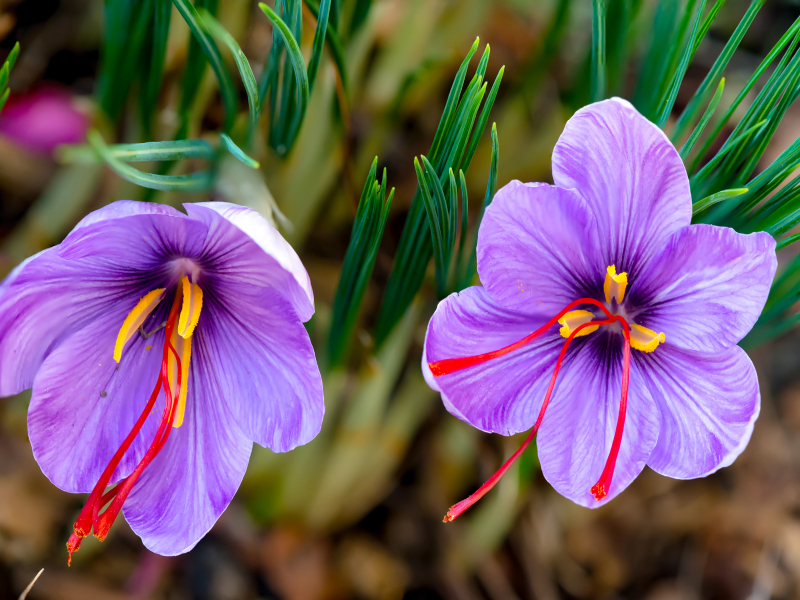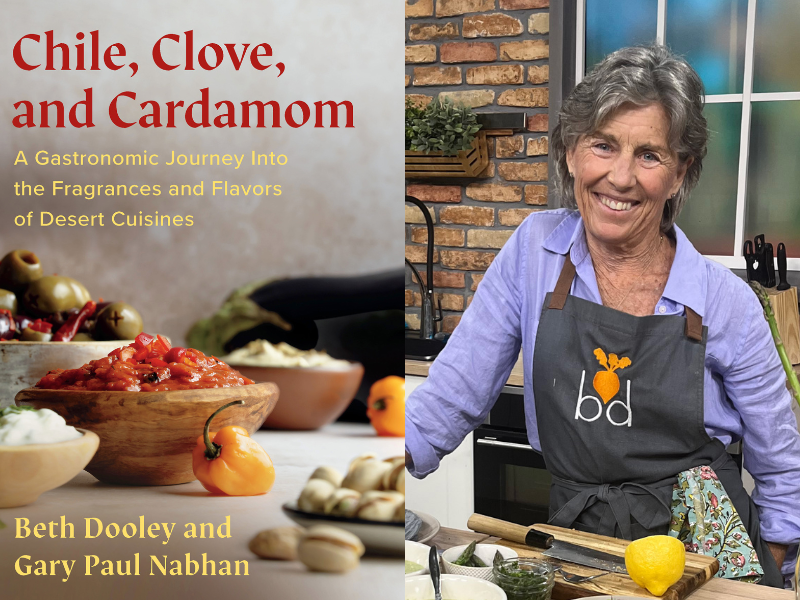
Saffron: Puttin’ on the Spice Ritz
I think of the spice pantry as the kitchen version of my jewelry box. While not shiny in appearance, they glisten with flavors, and all have their favorite recipes to complement.
Full disclosure: I separate my savory from sweet spices and line them up in alphabetical order. I’ve been known to peek in friends’ cabinets to see what they use and sometimes volunteer to organize theirs. That’s usually met with an eye roll and no thank you.
Spanish paella and Persian pilau (pilaf) aren’t part of my go-to repertoire but I always have that small jar of crimson threads just in case. How about you?
The threads are the stigmas of the flower Crocus sativus. It takes 1,000 flowers to yield 1 ounce, making it the world’s costliest spice by weight. There’s doubt to its origin, many believing it’s from Iran, where almost 90% of the world’s supply is grown. Some think it could be from Greece and Mesopotamia. It was slowly introduced throughout much of Eurasia and was later brought to North Africa, North America and Oceania.
It’s a triploid: It can’t grow in the wild or reproduce without human intervention. The gorgeous purple flower is painstakingly propagated and harvested by hand only on the morning it blooms.
Cleopatra was said to bathe in saffron-infused mare’s milk before seeing a suitor. In his book, “The Book of Spice: From Anise to Zedoary,” John O’Connell writes “saffron was used to dye the woolen bolero jackets worn by Minoan women; also in cosmetics, where it was mixed with red ochre, tallow and beeswax to make lipstick.”
Like any dried herb, saffron requires two components to activate its signature aromatics — heat and moisture – plus a little time. You can grind threads in a mortar and pestle then steep in hot water to release more flavor and color. When cooking anything involving hot liquid, skip steeping and simply add the threads into the liquid. Just a few go a long way.
Wishing you joy in the kitchen,
Michele

Saffron Cream Scones
Yield: 8 scones
1 cup heavy cream
½ teaspoon saffron threads
2 cups all-purpose flour
1 tablespoon baking powder
½ teaspoon salt
3 tablespoons granulated sugar
4 tablespoons unsalted butter, cut into small cubes and chilled
1 teaspoon vanilla extract
½ cup blanched almonds, roughly chopped
1 tablespoon candied ginger, roughly chopped
Sanding sugar
1. In a small saucepan, bring cream and saffron to a boil. Lower heat and simmer 5 minutes. Refrigerate overnight or at least several hours.
2. Heat oven to 425°F. Line a rimmed baking sheet with parchment paper or a silicone mat. Remove cream from refrigerator; it should be a pale golden color.
3. In the bowl of a food processor or a medium bowl, combine flour, baking powder, sugar and salt until fluffy. Add butter and extract; pulsing until butter is pea size. Don’t overwork the dough! Remove from food processor and into a bowl.
4. Add almonds and ginger and mix thoroughly. Pour about ⅔ cup heavy cream over dry ingredients, mixing with a fork until a wet but cohesive dough forms. If necessary, add more cream by the tablespoon. Knead a few times.
5. Turn dough out onto baking sheet and pat into a round ¾-inch thick by 8 inches wide. Brush another tablespoon or so of cream on top and sprinkle with sanding sugar. Cut into 8 wedges, then gently pull wedges apart to give them room to expand.
6. Bake 12-15 minutes or until lightly browned at the edges and no longer soft to the touch. Cool on baking sheet. They’re best eaten within 24 hours.





